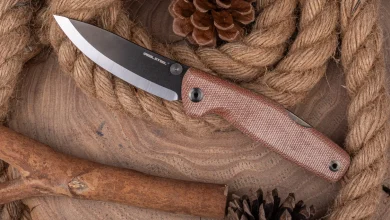TFB Review: Pulsar Axion XQ30 Pro – The Thermal Pocket Rocket
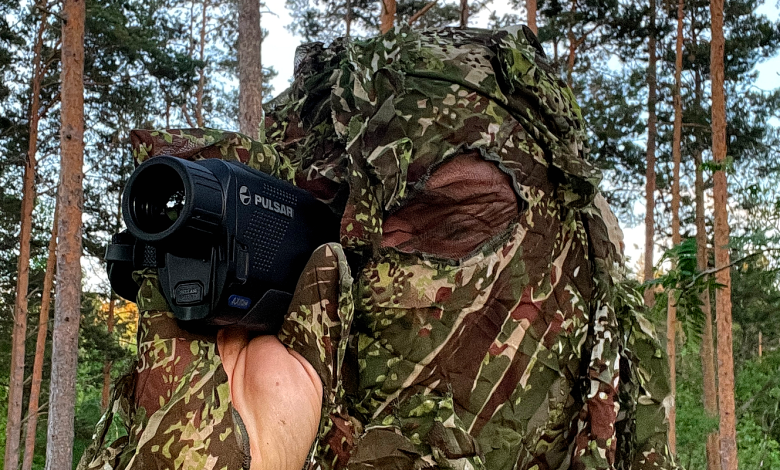
This is a review of the brand-new Pulsar Axion XQ30 Pro, a pocket-sized thermal monocular. Unlike quite a few of the thermals we review, the price of this thermal monocular should also fit most people’s pockets. To begin with, the small size of this device has to be mentioned. Previously, a small-sized thermal has always meant a compromise in image quality, but modern technology and development can also put old truths and preconceptions to shame. Let’s see how the XQ30 Pro performs!
Pulsar Thermals @ TFB:
Below: Two of these are made in Europe. Think about it.
Below: I sometimes use a mounting plate and a tripod, to make videos and images better. Here’s a custom-made plate, which I got from a friend. A very appreciated gift!
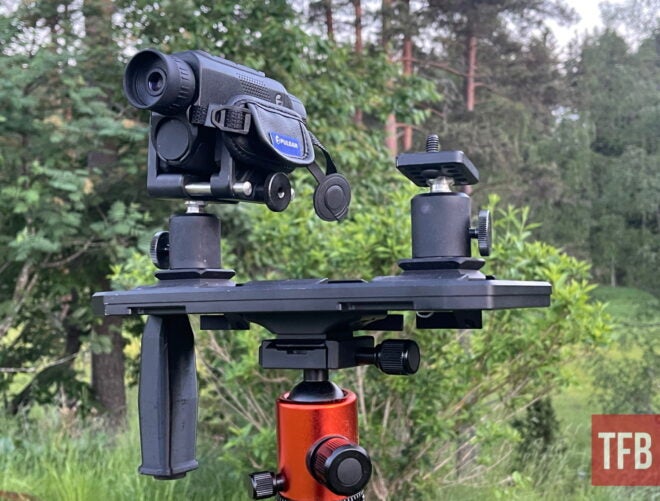
Potential buyers could be anyone from someone who just wants to get a quality thermal to check what happens around the farm at night to a hunter or Law Enforcement agent who goes searching for missing people, or people who hide from them.
Size and ergonomics
Size matters, regardless of what you’ve been told. The Pulsar XQ30 Pro is really small, and can fit the pocket of your jeans – even the back pocket if you strain it a little (like having a fat wallet, not that I would be able to relate). The width is less than 40 mm, without the hand strap. You could remove the strap, but I wouldn’t recommend it as it makes it easier to operate the device.
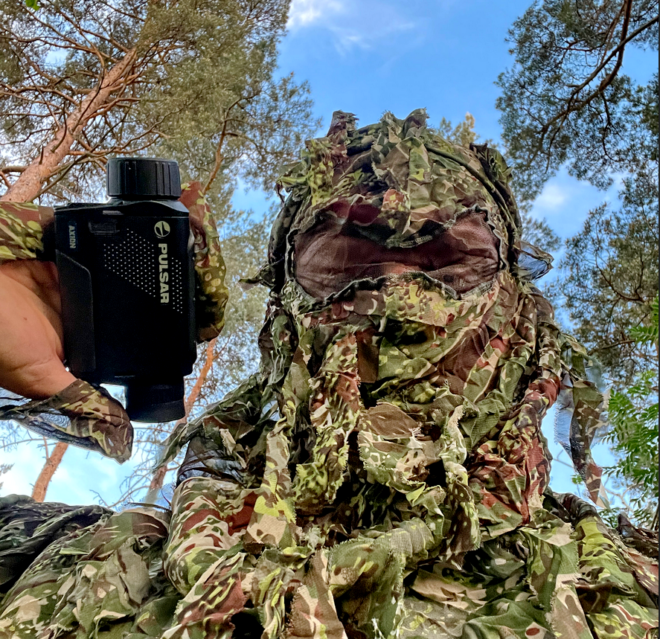
The XQ30 Pro has a magnesium frame underneath its rubber and plastic housing, to keep it light and strong. Everything features an IPX7 waterproof rating. The thermal lens has a focusing ring, to keep a good image of your target. The controls are ambidextrous, and the hand strap can be moved to either side. Unfortunately, the controls don’t have the tactile vibration feedback, found on the (much more expensive) Telos line.
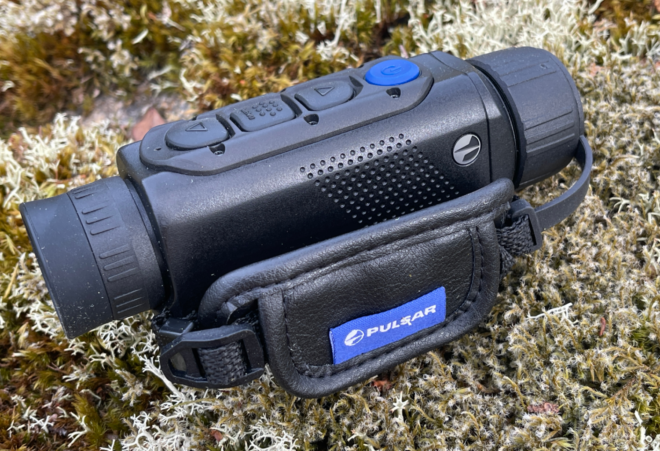
The specifications say that the dimensions are 144x41x69 mm, with a weight of 300 grams. To compare, an iPhone 15 Pro Max is 221 grams.
Below: The Pulsar Axion XQ30 Pro besides the Kestrel Shot Timer, car keys and iPods.
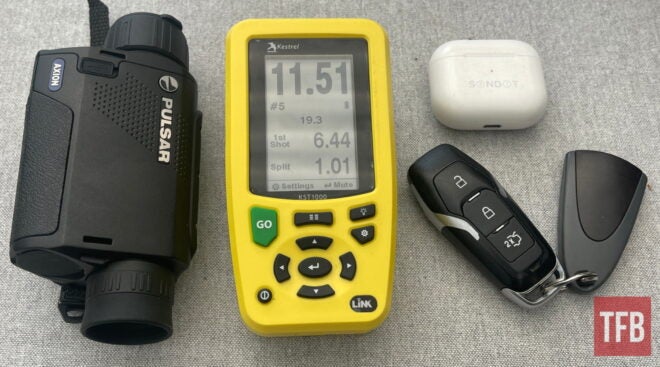
You can capture images and videos, and upload these through USB C or the Stream Vision 2 app.
Thermal
The Axion XQ30 Pro uses a thermal imaging sensor with 384×288 pixels resolution, with a thermal sensitivity of less the 25 mK (NETD value). If you’re used to the previous model, the Axion XM30S, it uses 320×240 pix. @ 12 µm with an NETD of

Furthermore, the Axion XQ30 Pro has a much wider Field Of View: 13.3×10 deg. compared to the Axion XM30S with 7.3×5.5 FOV – alomst double! The Axion XQ30 Pro has a lower basic magnification of 2 – 8 (x4 zoom). I hear a lot of arguments that the FOV doesn’t really matter, but I strongly disagree. We use these devices to discover stuff in the dark, using only one eye, so the wider you can see the better.
The AMOLED display inside the ocular has a resolution of 640 x 480 pixels.
The Axion XQ30 Pro is compatible with the Stream Vision 2 app while the Axion XM30S is compatible only with the Stream Vision.
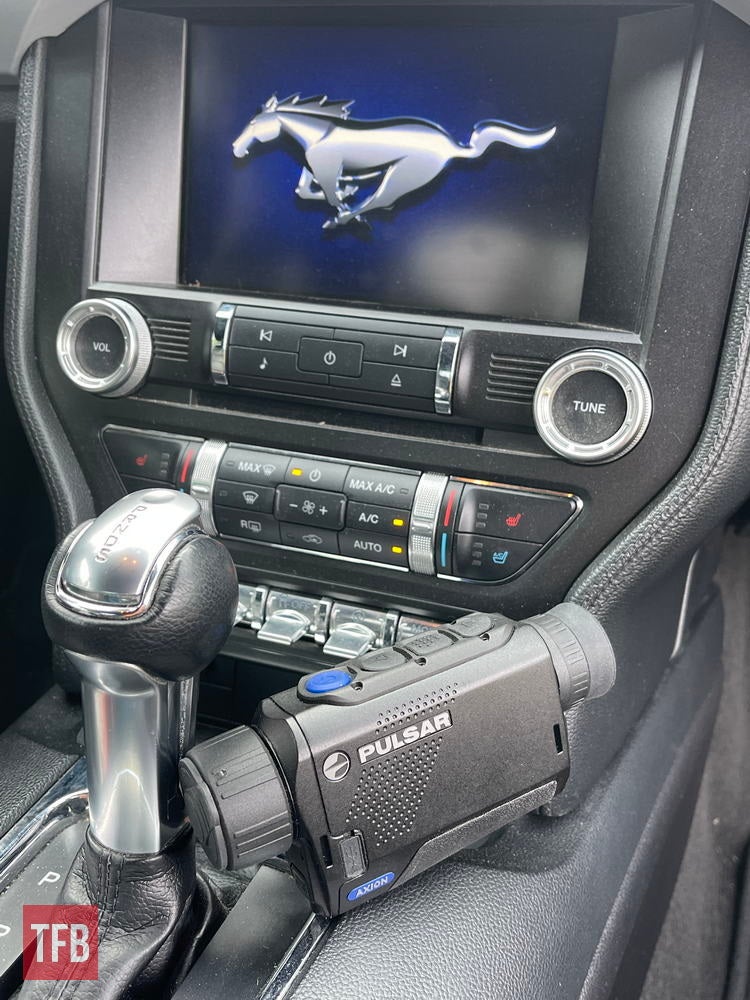
Another Pulsar competitor is the more expensive Axion XQ35 Pro. In terms of image quality, they are pretty much identical using the same thermal sensor but different objective lenses. The XQ35 Pro will provide a better image on longer distances due to a smaller FOV. It will give you a longer detection and identification range. Another possible benefit is that the XQ35 Pro can be ordered with a Laser Range Finder, but the overall volume increases. However, that LRF data can now be used for an accurate ballistic calculation if you have a Pulsar Thermal riflescope (without LRF).
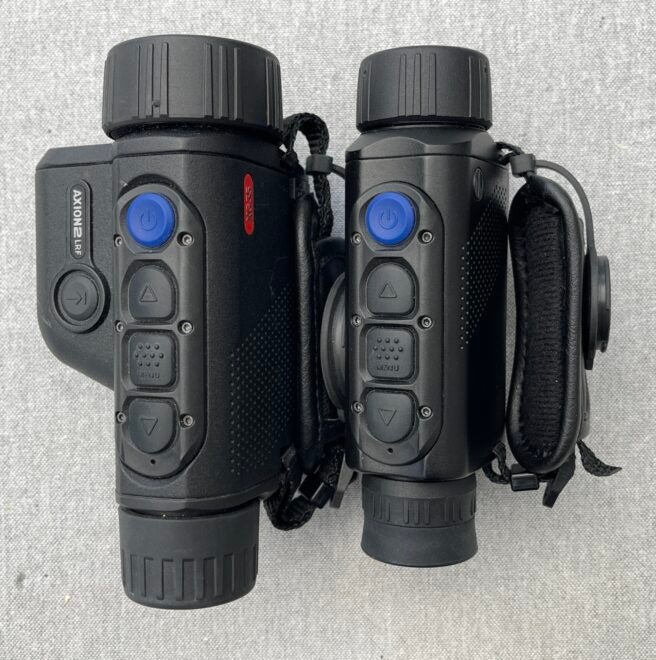
Image Quality
No review is complete without images of ”what does it look like”? And images can replace thousands of words. My first experience with the XQ30 Pro was with a pre-production model last autumn, on top of a viewing balcony in the middle of a snowstorm.

For those who never used a thermal monocular before, basically, it works like a normal monocular except it shows the image in a digital format, and shows heat. Below is a roe deer at around 90 meters. The Pulsar can be used both day and night.
Below: By the red arrow, a roe deer can be found. It’s clearly visible, even through the leaves.

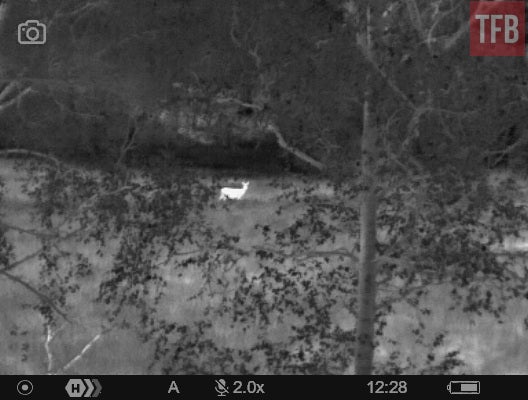
Below: Just so you get an idea, here’s an image from the Pulsar Merger NXP50 multispectral binoculars. The PiP comes from the secondary night vision camera, and is overexposed due to the daylight. As you can see this is an image with much more details, but this Merger also costs almost 4-5 times more. The images are taken just minutes apart, so the conditions are the same.
Sometimes and for some experts, the difference in details is needed, but in my opinion it’s better to put that money on the best thermal riflescope you can afford instead – and keep to an XCQ30 Pro.
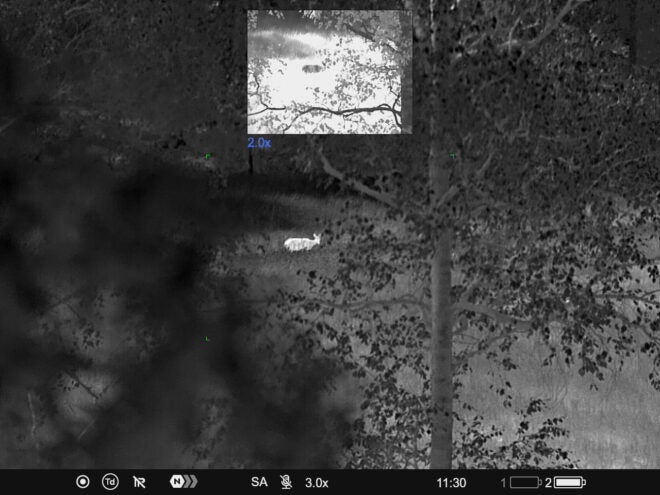
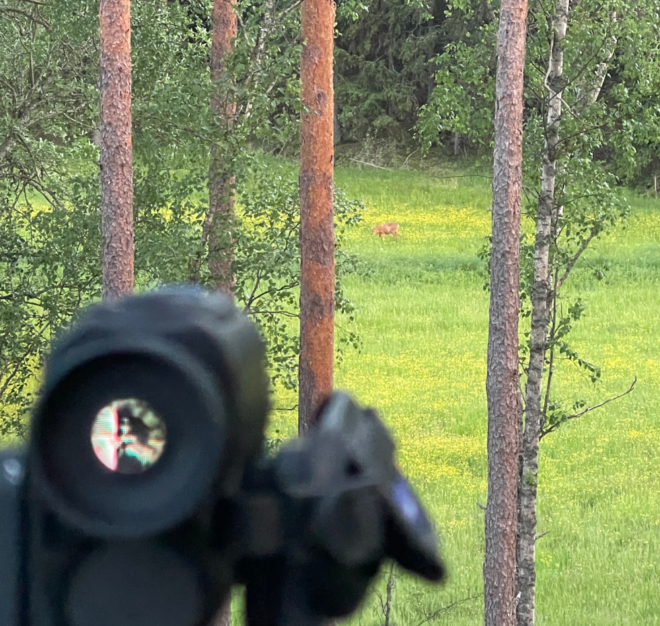
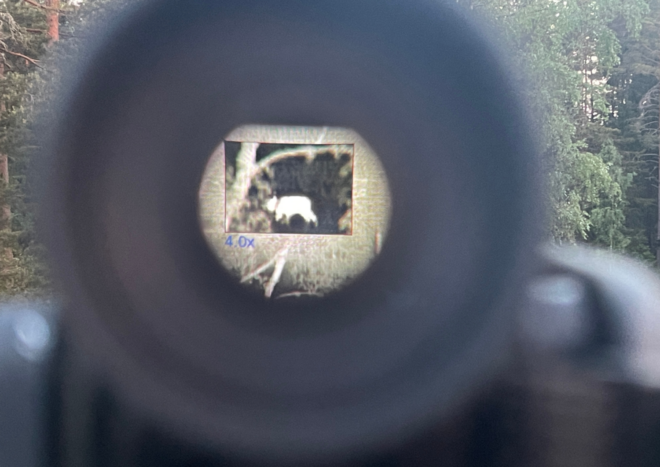
Here is a bunch of photos directly from the device. Even though I am used to it, I’m probably more disappointed with how these images turned out because the heat sources (animals) looked much brighter when I used the XQ30 Pro live.
Here is a small deer at about 350 meters. It looked much better live.
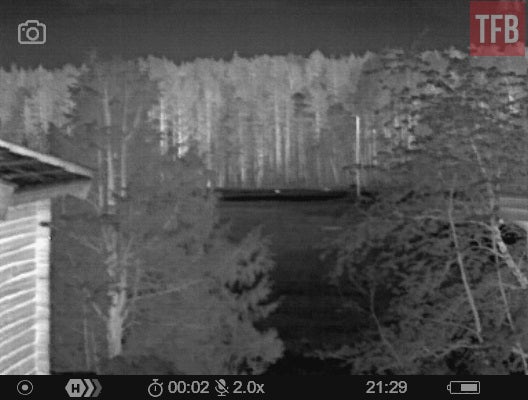
A roe deer at about 90 meters, it is down in a ditch with high grass.
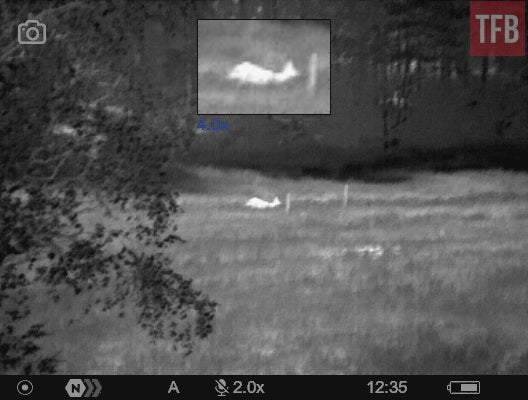
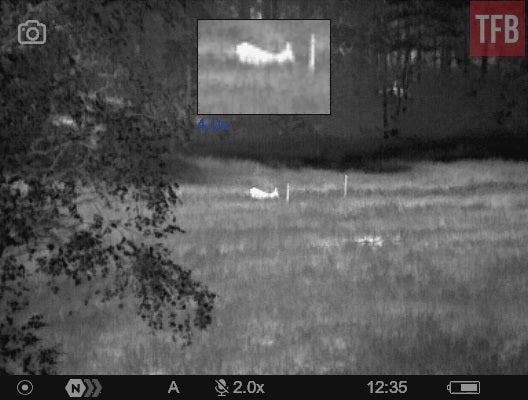
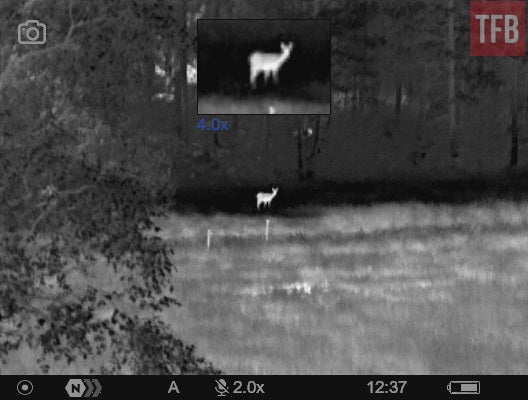
One of the reference images I take. In other Pulsar reviews, there are similar images.
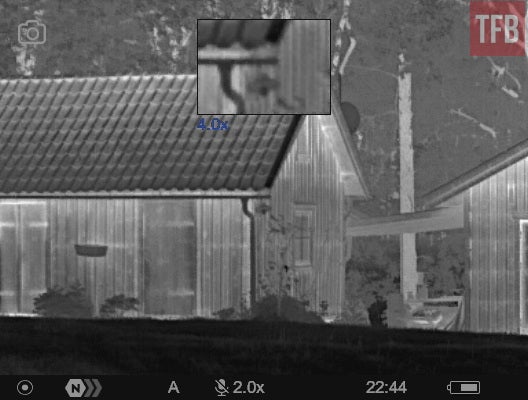
This is a 1942 Ford truck.
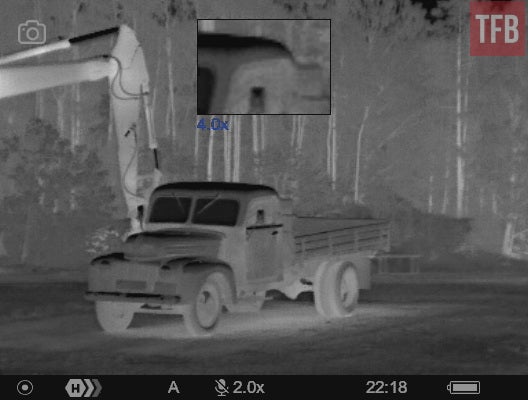
It’s easy to spot birds in the sky.
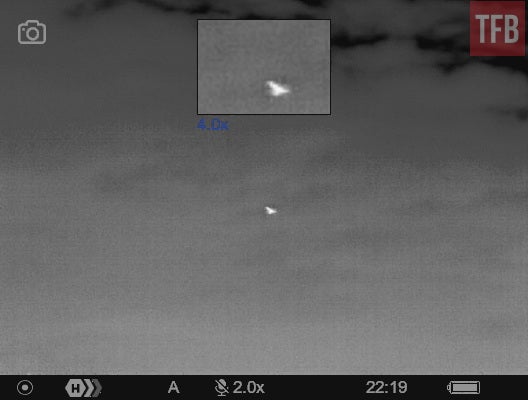
And in the forest.
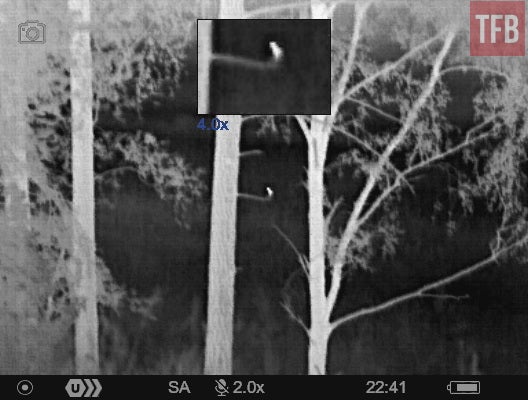
A rabbit at about 70 meters. This one was virtually impossible to see with the eyes (daylight).
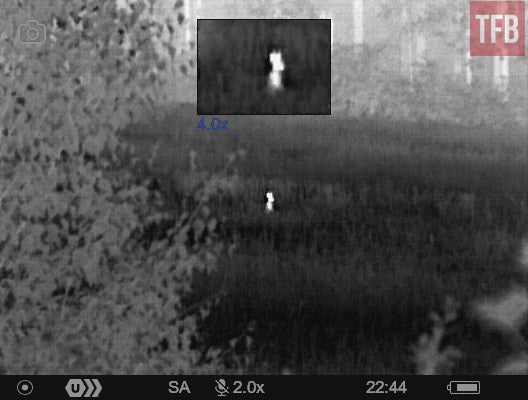
A roe deer at about 250 meters in full rain. Rain is very difficult for a thermal sensor, but the XQ30 Pro manages well.

Battery Life
The battery life isn’t too bad, still it’s probably this device’s weakest point. Luckily there are solutions. For instance, you can buy and carry more of the APS3 battery packs, and instantly change. Or you can use the USB-C, and charge the XQ30 Pro with an external battery back. An APS3 rechargeable battery pack is about 45 USD, so money is probably not going to be the main issue.
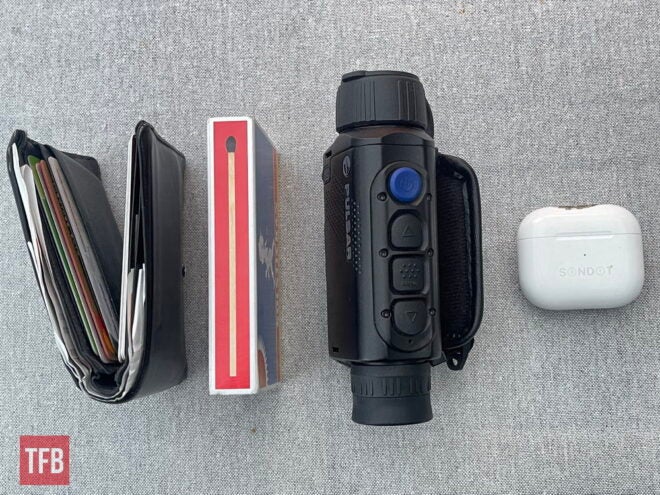
The Axion XQ30 Pro is said to provide a maximum of 7 hours of operating time. To compare, the Axion XM30S was specified around 4+ hours. There’s a discrete green diode to tell you if the device is on or off, and if it’s charging or not.
Price, Production & Availability
The regular price for the XQ30 Pro is $1,599.97. While this is still a lot of money for most people, it’s priced competitively on the market. The warranty is different depending on your market, so please check locally. To my knowledge, the Axion XQ30 is available in all markets already. The second-hand value should keep up fairly well, especially compared to other types of electronic devices.
The Axion XQ30 Pro is made in Latvia, so it’s Made in Europe including the French Lynred sensor. I visited the factory last year and was pretty amazed to see that Pulsar produces about as much as possible in-house including plastics and electronics.
The Axion XQ30 Pro fits the size of your palm. The camoflague is from Concamo.

Conclusion
The best thermal is the one you have on or with you, and the Pulsar Axion XQ30 Pro is really easy to include in your (enter your hobby or profession here) everyday carry. Regardless if you commute by bicycle, bike, car or truck, the XQ30 Pro fits almost any space or bag. When I’m not hunting, I keep it in my car. As with all Pulsars, the startup is fast, within a few seconds you have a thermal image.
Below: What does your glovebox look like?
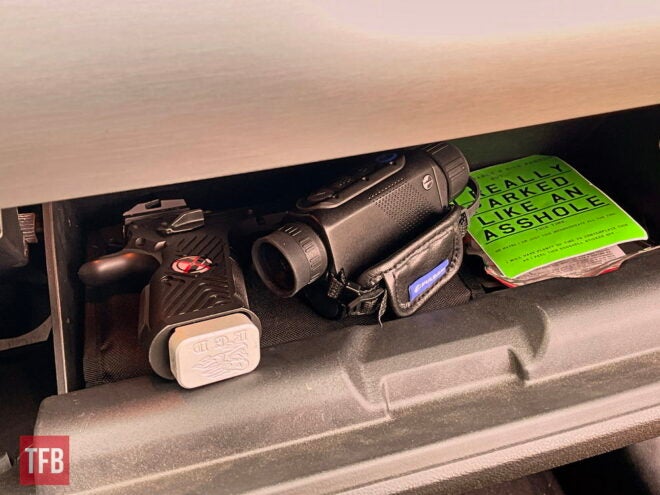
You can pick up the sticker here https://www.violentlittle.com/products/asshole-parking-sticker
If you want to know what’s going around your house or farm at night, this is a great tool, both for beginners and more professional users.
Below: Which one would you rather have in your pocket?
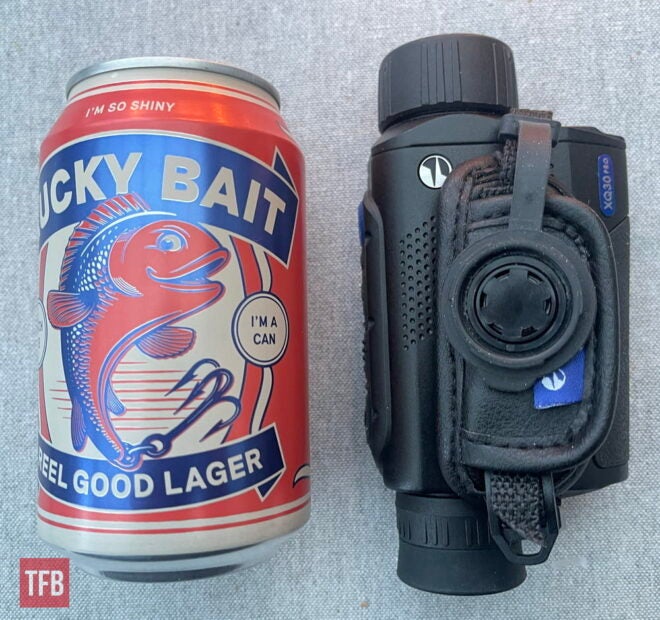
What will it not do? The Pulsar Axion XQ30 Pro is not here to replace larger, more powerful and more professional thermal devices. I think the image below gives a good idea on that subject.
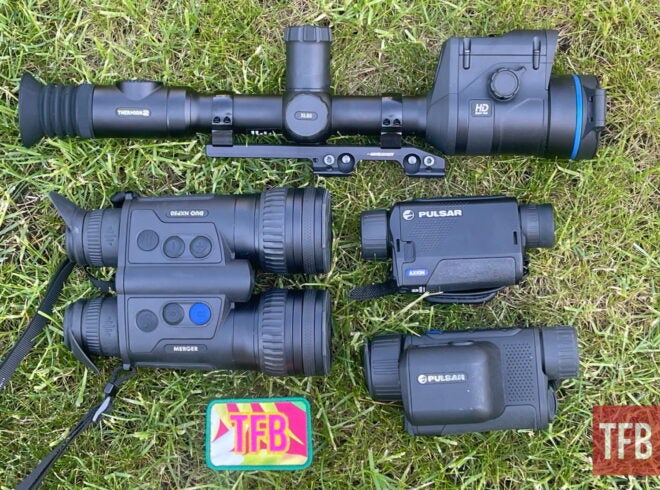
Pulsar Thermion 2 LRF XL50 HD Thermal, Pulsar Merger NXP50 multispectral binoculars and Pulsar Axions.
The XQ30 Pro will provide a shorter detection and identification range than the big beasts, but it should solve most of the needs that a hunter has, especially if you’re stationary in front of a feeder. For search downs it’s great also, due to its small size it can be readily available even with the rifle in your hand at the same time.
Even though I own more expensive and what generally would be called better thermals, I’m going to try to keep this one.
We are committed to finding, researching, and recommending the best products. We earn commissions from purchases you make using the retail links in our product reviews. Learn more about how this works.



